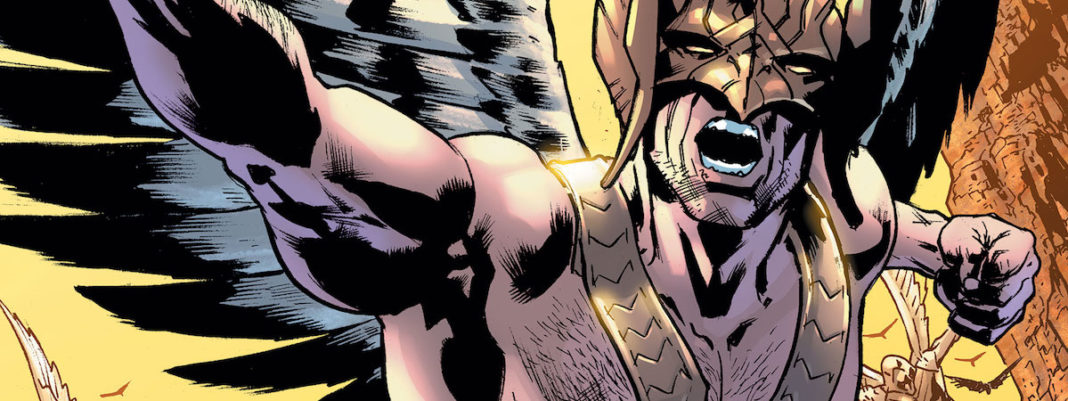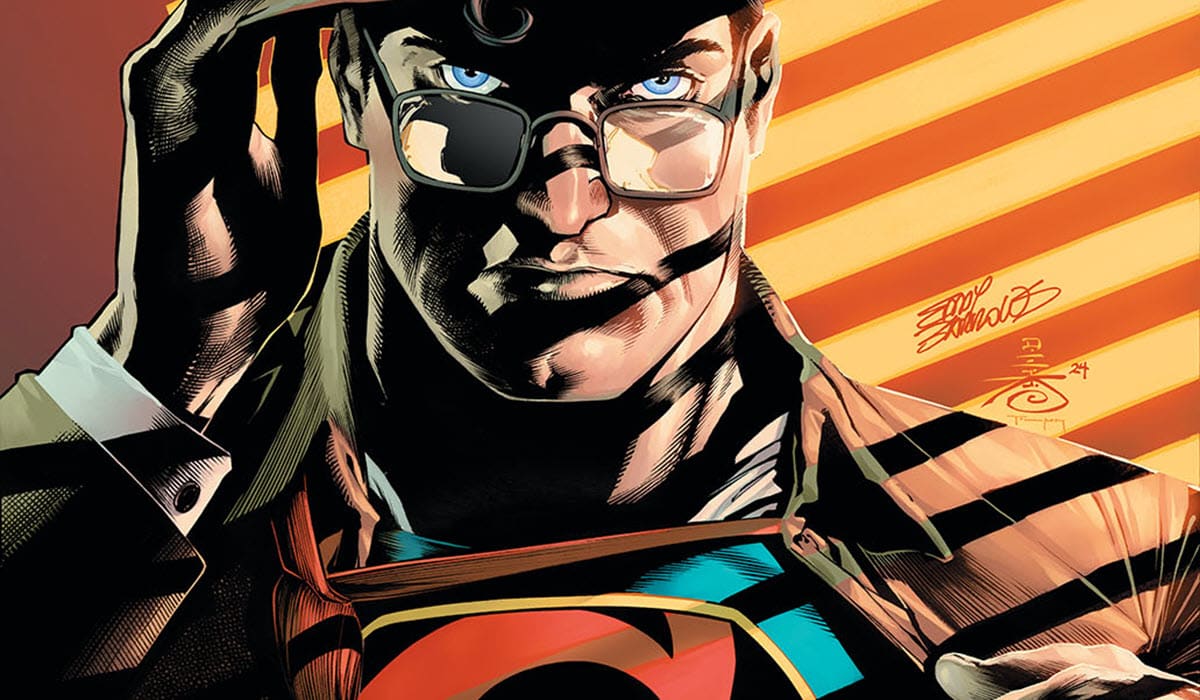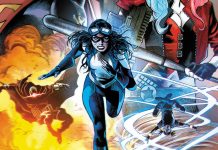Robert Venditti’s had quite the eventful year, launching the critically-acclaimed Hawkman series with Bryan Hitch, his Freedom Fighters maxiseries with Eddy Barrows, and his new OGN from Vertigo, Six Days with historian Kevin Maurer and artist Andrea Mutti. I had the chance to sit down with Venditti at DC’s booth at C2E2 2019.
Hussein Wasiti: With Hawkman, did you do extensive research into the character’s past incarnations or did you just do your own thing?
Robert Venditti: A bit of both. I didn’t grow up reading comics, I started reading them when I was in my mid-20s. I’m not overly familiar with a lot of the characters and continuities, so when DC asked me to do Hawkman, I went online and I started reading anything to find out what I could find out. All I knew about the character was that he was supposed to be massively confusing, so I started reading about him. In the Golden Age he’s an Ancient Egyptian prince who reincarnates and now he’s in the 1940s, and I read the Silver Age and now he’s a space cop on Thanagar.
In my head I said, “Oh, I get it. He reincarnates across time and space and the Thanagarian and him are the same guy. That ended up not happening, so I said, “There’s my story, then.” I don’t know if I would have made that connection had I grown up reading them and the ideas were already so divorced in my head. Thanagarians over here and Egyptians over there, and they can’t be the same, because of Zero Hour or something. I think the way I was able to connect those dots was because I came at it completely new. So thinking about that concept would mean reincarnating across time and space, which is a different look at reincarnation. What does that mean? Where does he start? Where has he been all this time?
In Metal, Scott Snyder established that Hawkman’s been around for at least 10 thousand years. He’s been on Krypton, he’s been on Rann, he’s been in the Microverse, maybe he’s been on New Genesis. He’s been to all these places and he’s had all these lives, so that’s where we built the mythology from.
Wasiti: Talk about your collaboration with Bryan Hitch. Has your approach to writing changed while working with him?
Venditti: I write plot-first for him. It’s a complete trust in what he’s going to do. It’s staggering that he did 12 issues in a row, how often does that happen? Every issue on time, plus covers, plus he inked a lot of it, and every single issue was in a new place. Issue one we’re in London, issue two we’re in Egypt with all the hieroglyphics, issue three we’re on dinosaur island and he’s fighting t-rexes, issue four he goes to Thanagar, issues five and six he’s in the Microverse, seven is his first life, eight he’s on Krypton. New cities, new cultures, new costumes, new characters. He’s developing all these things on a monthly schedule, on time. His ability as a visual storyteller doesn’t just mean imagery, but his storytelling, his ideas, his creativity, his enthusiasm. He’s such a great guy to collaborate with. What we’ve built together, we really had built together. I’m so thankful for him to be on the book. Just getting to know him while working with him has been a very positive experience.
Wasiti: What’s next after Bryan leaves?
Venditti: Will Conrad’s coming in to draw issue #13, which is a standalone issue. After that we get into the second arc of the series, and we’ll have a new artist coming in for that, who DC hasn’t announced yet. I’m already halfway through that story, and we know what the arc after that is going to be as well.
Wasiti: Has Bryan influenced any of your own storytelling?
Venditti: Every artist is different. I write plot-first for Eddy Barrows on Freedom Fighters. For Bryan it’s much more of a conversation. The plot goes back and forth, we email, I’ll say something, then he’ll say something, and it ends up being something completely different from when it started. I knew we’d be getting to the point of the series where Carter Hall was going to call his past lives to the present. Bryan said, “What if we found out the robots were really ships full of an army of other people? I thought, “You wanna do that?” I’d never ask him to draw five thousand characters in this issue, but he asked if he could draw five thousand characters. I told him I would write to that. He’s that kind of guy, he’s all about what’s best for the story. I can’t imagine that he doesn’t go blind drawing some of these spreads with 100 figures on them. That’s what he wanted to do. It challenges me as a writer to always come up with new things. We’re gonna go to the Microverse; what could I do in the Microverse that hasn’t been done yet with these characters, that will play to Bryan’s strengths and make him enjoy doing it? I’ll flip it, so now Hawkman is the tiny guy and Atom is the giant, so now Bryan gets to draw a big, giant character.
Wasiti: Let’s talk about your Vertigo OGN Six Days. Can you elaborate on your personal connection to the story?
Venditti: Six Days is a story based on real events in World War II. I have a great-uncle who was part of D-Day; he was a paratrooper in the 82nd Airborne. All we knew was that he died on June 11 somewhere in France. We never knew the circumstances of his death, the battle he took part in, any of it. A few years ago I found a letter in some of my grandmother’s things that was written by one of his war buddies to my great grandmother, detailing the time where he died and the events of the battle. I started researching it, and within a few hours online I was looking at his name on a plaque at the back of this church in a tiny town in France. It’s really just an amazing story about my uncle and 192 other people.
It was one of the worst misdrops of all of D-Day, and they ended up behind enemy lines, so much so that they landed in this small town. They basically lived there for six days because the fighting wasn’t even there yet. They became a part of this very small community and ate with these people, went to church with them, and got to know them. Because the town was in the middle of a marsh on high ground, the Germans had to cut through with a reinforced caravan. The soldiers had to defend the town against an overwhelming force. And that’s how my uncle died. The Germans came in and executed a lot of soldiers and civilians and then burned the town, so it’s very tragic but in a way very uplifting when you look at the sacrifices of not just the soldiers, but of the civilians.
It’s not something we see a lot of in American entertainment, where we often see things from the soldier’s perspective. I wonder if it’s because we never saw the war here at our home. In this instance I wanted the story to be very much balanced between the soldier perspective and the civilian perspective to tell both stories and how they came together. Working with Kevin Maurer on the story, who was an embedded journalist in the 82nd Airborne in Afghanistan and knows a lot about the military, really brought a level of authenticity. I know story and writing for comics, but I don’t know if I would have the courage to do the story without him and his research. Another historian, Mark Morgan, helped us a lot with the battle.
Wasiti: How did you meet Kevin; did you know of him previously?
Venditti: I knew him for a while. I met him at a writing conference. I was at a comic book store doing a signing and it ended up being his local shop. He came by the store to talk and that was right after I had found that letter. He said I should do that story, and I wasn’t a non-fiction guy. I’m not trained to do that and I didn’t trust myself with that kind of material because they’re real events. While we had to fictionalize some of it because so much of it has been lost to history, that battle did take place and it is a real town. I asked him if he wanted to do it with me and he told me that the 82nd Airborne was stationed close by. He knew a lot about it so it seemed like a natural fit. He was really great to work with.
Wasiti: Six Days and your Freedom Fighters series share the same historical DNA; did you approach the latter with the same personal background?
Venditti: It’s interesting that it all happened at once and it’s crazy to think that they’ll both be out on the 75th anniversary of D-Day. I was already working on Six Days when DC asked me to do Freedom Fighters and it was an opportunity to look at the same material from a different perspective. Six Days is about the sacrifice of soldiers and civilians and how to overcome that threat to win the war. Freedom Fighters is about what if those sacrifices weren’t enough and what the world would be like living for years under Nazi rule. How do you come back from that level of darkness and defeat? How does heroism shine, even in those darkest hours?
For more from Robert Venditti, follow him on Twitter.







